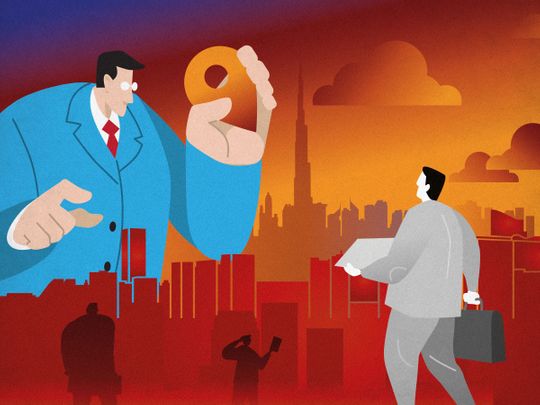
Dubai’s property market needs a repurposing
Changes to zoning laws and of property use will bring about a revival
by Sameer Lakhani, Special to Gulf NewsWilliam Hogarth, a keen observer of London and who saw it descend into madness after the South Sea Bubble in 1721, came up with an engraving of the city in the midst of chaos. in the center of the diagram, there is a sign stating “Who’l Ride” (Who will ride?).
This refers to the phenomenon of stock brokers who subdivided lottery tickets or shares of stock and created a market for speculators (day trading was common even back then!). He was explicitly asking who would invest in these shares. Much the same is being asked about the real estate market and its various subcategories in Dubai in the post-CoVID-19 world, where everything from the design to the zoning of building structures is being called into question.
As real estate assets approach - or in certain cases even breach their replacement value on the downside - the issue remains one of the impact that remote working has on the office segment. And whether the “densification” of various city centers will adversely impact prices as people look to move to the suburbs in light of new preferences for social distancing.
No perfect solution
Cities are an immense laboratory of trial and error and no city typifies this better than Dubai. Whether the focus moves to “suburbia” or whether people revert to their need for connection in dense downtown clusters, Dubai caters to all needs in a way where the only blockages come from either the analysts trying to spin the data or bankers, who, are in the same stage of elaborately learned superstition as medical science was in the last century.
In order to get the blood flowing into the markets again, the liquidity that must inevitably flow will come from institutional and individual investors with increasing sophistry that recognize bargain basement deals. However, for them to act, the superstructure of technical complication that has been erected - and is at variance with reality - must give way to the powers of independent thought process that shows the city for what it is: an organism that nourishes relationships between work-and-play.
Get back to building
Successful cities are fantastically dynamic places and this is strikingly true of Dubai, which offers a fertile ground for the plans of hundreds of thousands of people. Handling organized complexity then becomes the key task at hand, and regulators must allow for diversity and flexibility in zoning. As well as allow for organic liquidity to be generated in revitalizing upcoming areas and prevent the prolonged “plague” of stalled projects.
Despite the fact that people seek to connect through technology platforms, the need for a free flow exchange of ideas implies that dense city clusters will always remain. Invent new economic arrangements and regulate them in innovative ways under a platform that allows for diversity as well as economic flexibility. The latter (which is already underway) has to accelerate through government spending, debt moratoriums, and rezoning, especially in sectors that have been hit harder and will take longer to recover.
A sort of reset
Reflation then becomes the key impulse; not only reflationary factors that infuse liquidity (US dollar weakness is already starting to care of part of that problem), but also reflationary real estate policies that relax requirements for zoning changes, and allow for existing and upcoming developments to be used for different purposes.
A decade of austerity in Europe has shown that cost-cutting and austerity gets the economy nowhere, leading to enhanced wealth inequality, as it is transferred towards money lenders at the expense of entrepreneurs, the key variable that has given Dubai its momentum since inception. In the meantime, as capital moves from the primary to the secondary markets in Dubai, it is a natural occurrence of capitalizing on the price differential that had long existed between these two spaces.
In time, as stimulus measures kick in - currently in the form of delaying payment obligations, but eventually through liquidity spigots opening - the path that Dubai is on track for suggests growth as long as it maneouvres itself from the snake pit of deflation.
In his illustration, Hogarth suggests that the damage caused to the city of London was irreversible. We know of course that this was not the case and that London arose from the ashes to lead the great Industrial Revolution. There is similarly no doubt as to Dubai’s future as the existing (and upcoming) infrastructure is rezoned, revitalized and reinfused.
Developers, investors and end-users will all come along for the ride, once the structural factors causing the deflationary pressures at present, recede. The boom-and-bust cycles may continue, but, in the words of Henry James, Dubai will continue to “meet the demands of its imagination”.
Immense and outsized as it is, as long as the playbook seeks to destroy the pestilence of the deflationary paradigm.

- Sameer Lakhani is Managing Director at Global Capital Partners.